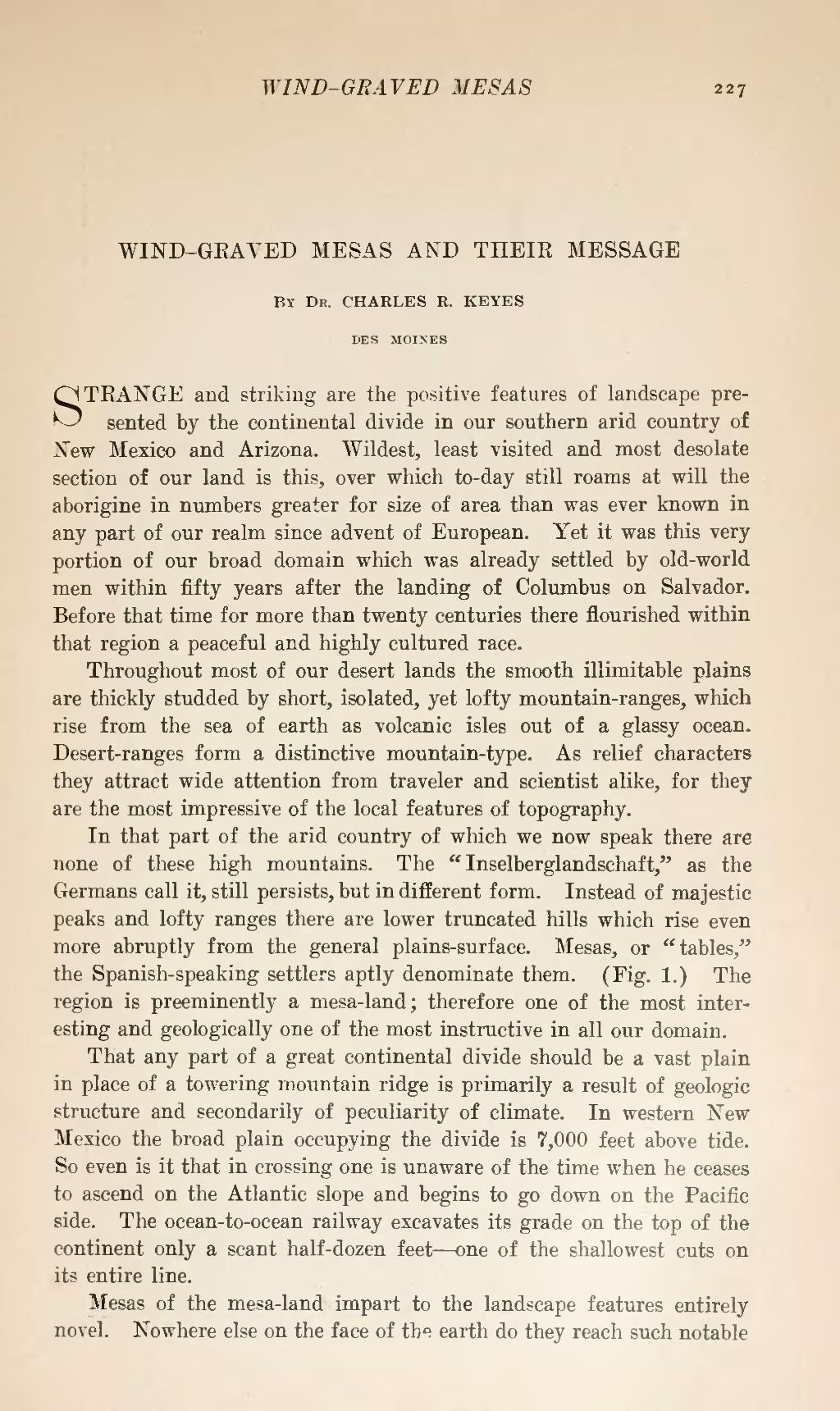| WIND-GRAVED MESAS AND THEIR MESSAGE |
By Dr. CHARLES R. KEYES
DES MOINES
STRANGE and striking are the positive features of landscape presented by the continental divide in our southern arid country of New Mexico and Arizona. Wildest, least visited and most desolate section of our land is this, over which to-day still roams at will the aborigine in numbers greater for size of area than was ever known in any part of our realm since advent of European. Yet it was this very portion of our broad domain which was already settled by old-world men within fifty years after the landing of Columbus on Salvador. Before that time for more than twenty centuries there flourished within that region a peaceful and highly cultured race.
Throughout most of our desert lands the smooth illimitable plains are thickly studded by short, isolated, yet lofty mountain-ranges, which rise from the sea of earth as volcanic isles out of a glassy ocean. Desert-ranges form a distinctive mountain-type. As relief characters they attract wide attention from traveler and scientist alike, for they are the most impressive of the local features of topography.
In that part of the arid country of which we now speak there are none of these high mountains. The "Inselberglandschaft," as the Germans call it, still persists, but in different form. Instead of majestic peaks and lofty ranges there are lower truncated hills which rise even more abruptly from the general plains-surface. Mesas, or "tables," the Spanish-speaking settlers aptly denominate them. (Fig. 1.) The region is preeminently a mesa-land; therefore one of the most interesting and geologically one of the most instructive in all our domain.
That any part of a great continental divide should be a vast plain in place of a towering mountain ridge is primarily a result of geologic structure and secondarily of peculiarity of climate. In western New Mexico the broad plain occupying the divide is 7,000 feet above tide. So even is it that in crossing one is unaware of the time when he ceases to ascend on the Atlantic slope and begins to go down on the Pacific side. The ocean-to-ocean railway excavates its grade on the top of the continent only a scant half-dozen feet—one of the shallowest cuts on its entire line.
Mesas of the mesa-land impart to the landscape features entirely novel. Nowhere else on the face of the earth do they reach such notable

